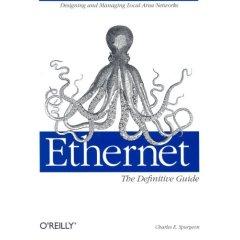| 2020ok Directory of FREE Online Books and FREE eBooks |
Free eBooks > Computers & Internet > Networking > Networks, Protocols & API's > LAN > Ethernet: The Definitive Guide
Ethernet: The Definitive Guideby Charles Spurgeon  Download Book (Respecting the intellectual property of others is utmost important to us, we make every effort to make sure we only link to legitimate sites, such as those sites owned by authors and publishers. If you have any questions about these links, please contact us.) link 1 About Book Amazon.com The "Ethernet"--as distinct from the Internet, intranet, sneakernet, and others in the net family--is both a familiar face and a familiar name. However, it evokes the mental experience of the school crossing guard whose ownership of a corner of your mindscape is so context-sensitive that a change in venue renders the name or face placeless. Crossing guard or letter carrier? Just what is the Ethernet, again? True to his subject's infrastructural centrality and steadfast obscurity, Charles E. Spurgeon delivers a solid, basic treatise, Ethernet: The Definitive Guide, which describes its subject matter in all of its mundane glory. Appropriately, this is the octopus book from O'Reilly. Spurgeon's examination of Ethernet spans four sections with 20 chapters, three appendices, an 18-page glossary of acronyms and jargon, and a generous index. The Ethernet is the hardware of the Inter/intranet and the underlying packet-formatting software protocols that control the hardware interfaces. But it is mostly just hardware: cables (thin-coaxial, thick, twisted pair, fiber optical), connectors (BNC, RJ-45), hubs (switching, routing), and system catch-all naming conventions (10BASE-2, 10BASE-T.) Sensibly, the discussion excludes Ethernet cards and network communications protocols that are more detailed than frame or packet definition, viz., there is essentially no information on packet-level security. But if you need a plan for designing a telephone closet, Spurgeon waxes eloquent on both network topologies and impedance matching. Spurgeon's survey of the Ethernet is enriched by his intimate knowledge of its historical and developmental context. He glances through the original 1970s papers by Metcalfe in which the Ethernet was parameterized as well as the unfortunate misunderstanding of Metcalfe's simple model of throughput, and the subsequent papers that tracked performance characteristics and corrected misunderstandings. Since Spurgeon's book is aimed at the network practitioner, his discussions answer engineering questions: How do you design a network? How do the pieces perform? How does it all go together? How do you know what broke? The book is copiously and clearly illustrated with conceptual figures, pin-out diagrams, performance charts, and some basic printouts from network diagnostic applications. There is no network monitoring code whatsoever. Clearly it is best not to mix up the network designer with the programmer, just as the school crossing guard really isn't the letter carrier. But you have to remember to remember that. --Peter Leopold
Book Info Provides everything you need to know to set up and manage an Ethernet network. Details about IEEE 802.3 standard and its protocols. Softcover. DLC: Ethernet (Local area network system). Related Free eBooks
| Related Tags |












SEND A COMMENT
PLEASE READ: All comments must be approved before appearing in the thread; time and space constraints prevent all comments from appearing. We will only approve comments that are directly related to the article, use appropriate language and are not attacking the comments of others.